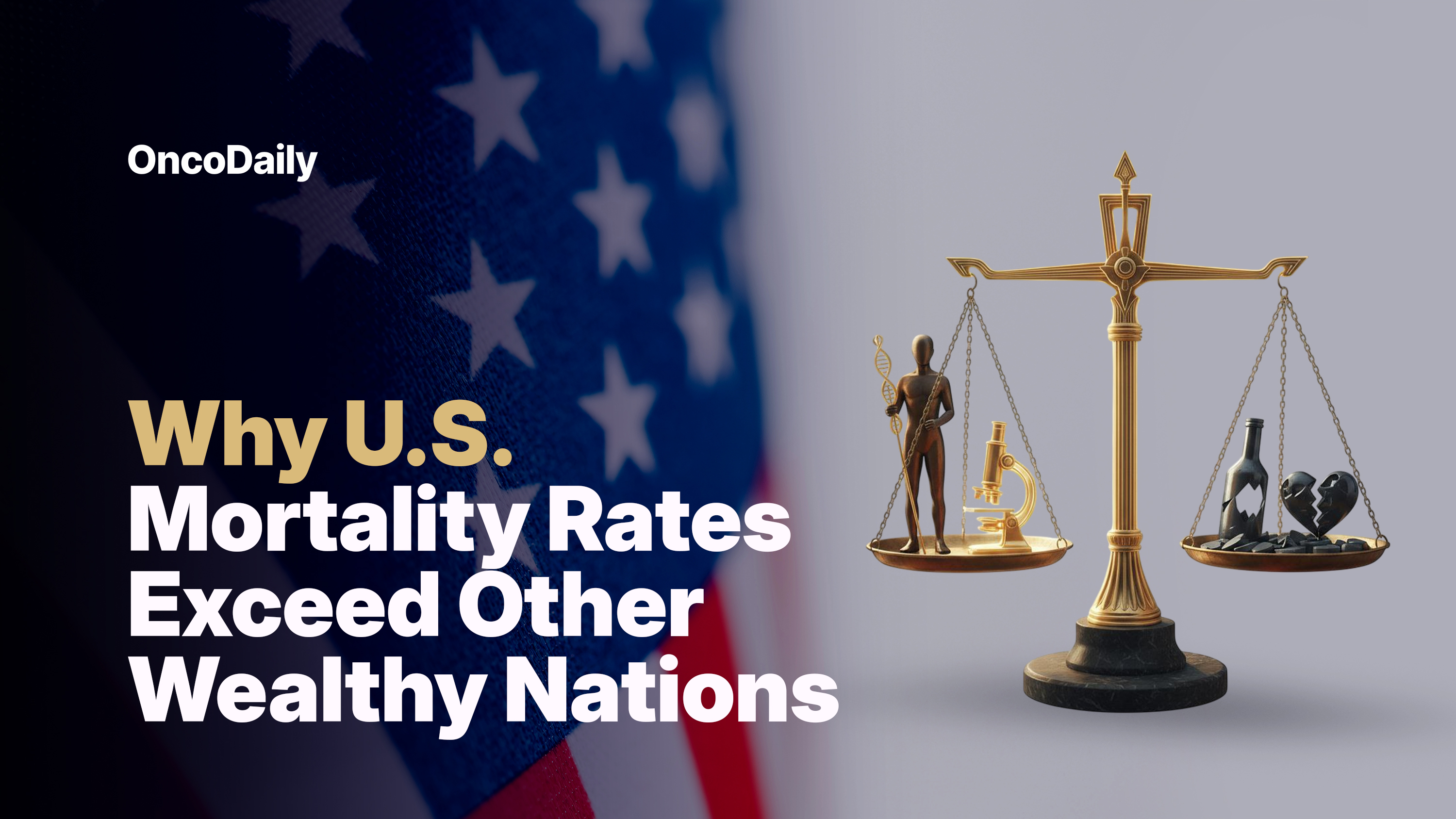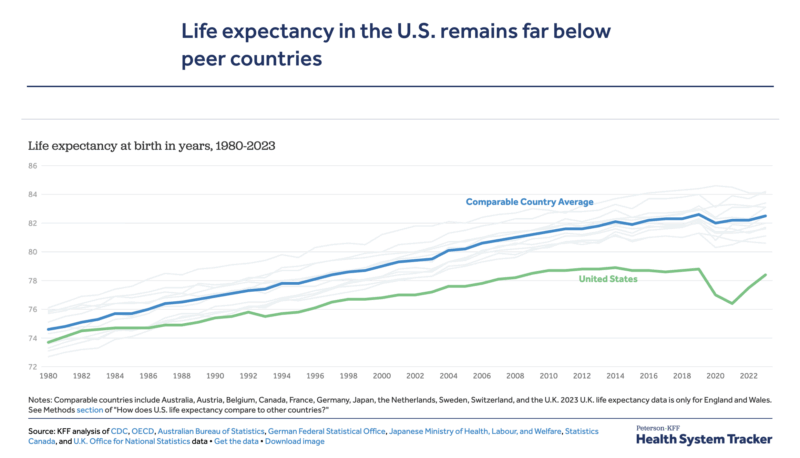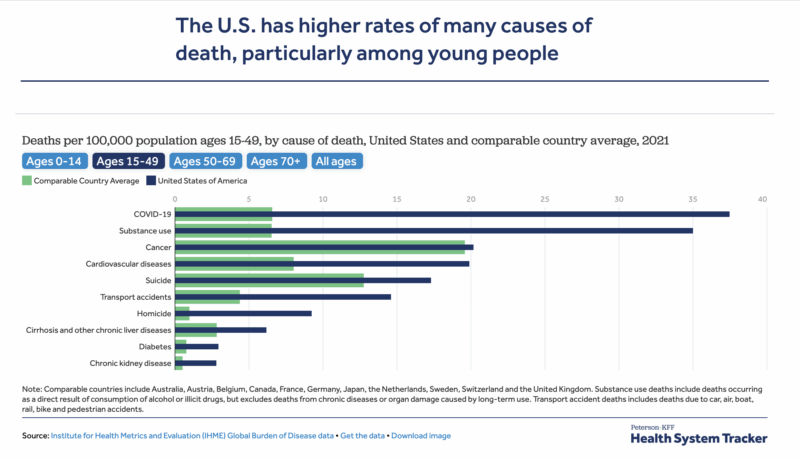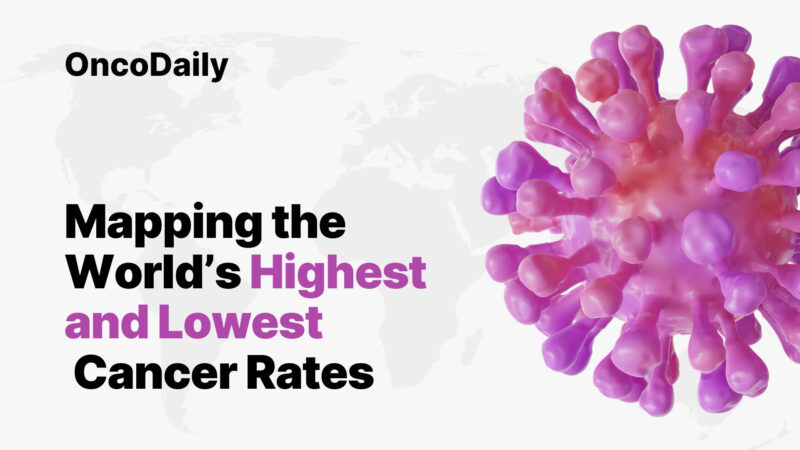A recent analysis by Emma Wager, Lynne Cotter, Nirmita Panchal, and Cynthia Cox of the Kaiser Family Foundation (KFF) sheds light on why life expectancy in the United States continues to lag behind that of other high-income countries. While the U.S. excels in cancer survival rates, Americans face higher mortality from preventable causes particularly chronic diseases, substance use, and external injuries that significantly reduce overall life expectancy.
Life Expectancy Gap Persists Despite High Health Expenditure
In 2023, the average life expectancy in the U.S. was 78.4 years, compared with 82.5 years among peer nations such as Canada, France, Germany, Japan, and Switzerland. This difference exists despite the United States spending far more per capita on healthcare.
The study found that premature deaths defined as deaths before age 70, occur at nearly twice the rate in the U.S. (408 per 100,000) as in comparable countries (228 per 100,000).
Chronic Diseases: The Leading Contributors
About one-third of this excess mortality stems from cardiovascular, respiratory, and kidney diseases, which collectively caused over 100 deaths per 100,000 people under 70 in 2021. These chronic conditions are closely linked to lifestyle factors, healthcare access barriers, and social determinants of health.
While cancer remains a leading cause of death, it is not the main driver of the U.S. life expectancy gap. In fact, the analysis shows that the U.S. performs comparatively well in cancer outcomes, suggesting that advancements in oncology care are not being matched in other areas of health.
Rising Deaths Among Younger Populations
Deaths among younger adults (ages 15–49) are a major factor pulling down U.S. life expectancy. The mortality rate in this group was 2.5 times higher than that of peer countries in 2021.
The primary contributors are substance use, homicide, suicide, and accidents all significantly more common in the United States. Substance use deaths alone accounted for 12% of the difference in premature mortality between the U.S. and other nations.
The report also notes that the U.S. homicide rate is nearly eight times higher than in comparable countries, and the substance use death rate is four times higher.
Chronic Conditions and Social Determinants of Health
Beyond behavioral causes, chronic illnesses such as diabetes, liver, and kidney diseases contribute substantially to the mortality gap. The U.S. diabetes death rate, for instance, is 2.5 times higher than in peer countries, while kidney disease mortality is nearly four times higher.
These trends reflect systemic challenges diet, healthcare access, and socioeconomic inequality, that shape health outcomes across generations.
COVID-19’s Temporary but Significant Impact
COVID-19 also played a role, accounting for nearly a quarter of the premature death gap between the U.S. and comparable countries in 2021. However, the authors note that even before the pandemic, the United States already had a slower life expectancy growth trajectory, suggesting deeper structural causes.
A Call for Broader Health Priorities
The findings underscore that while the U.S. excels in cancer care and advanced medical technologies, these successes are overshadowed by preventable early deaths and chronic disease burdens. Improving life expectancy will require broader public health interventions addressing mental health, addiction, injury prevention, and equitable access to primary care.
Mapping the World’s Highest and Lowest Cancer Rates
Written by Nare Hovhannisyan, MD



